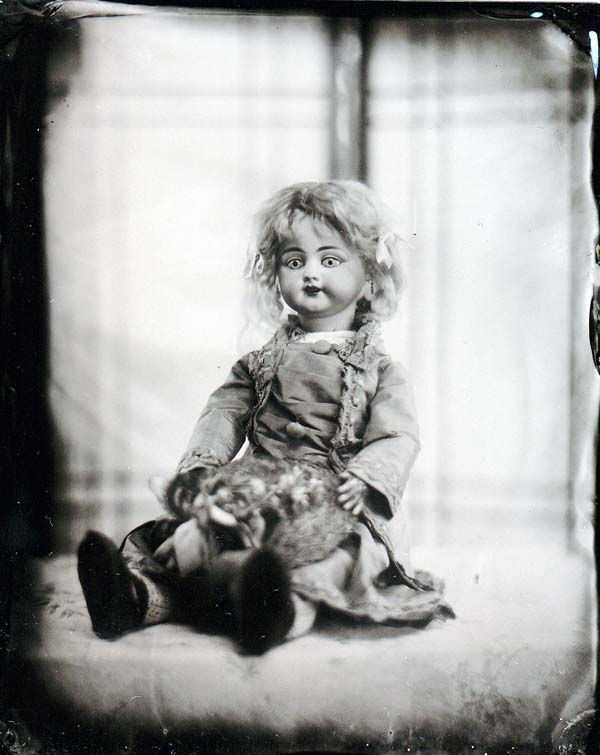
(The picture on the right shows the original phonograph removed from the doll's body. When installed in the doll the tiny horn points up to holes in the chest. The phonograph measures only 7" tall, with a wax cylinder measuring 3" in diameter and 5/8" wide.)
Despite several years of experimentation and development, the Edison Talking
Doll was a dismal failure that was only marketed for a few short weeks in early 1890.
Edison had envisioned the idea of a talking doll as early as 1877, but it was another
inventor, William W. Jacques, who first developed a prototype based on Edison's original
tinfoil phonograph. Jacques and his partner Lowell Briggs founded the Edison Phonograph
Toy Manufacturing Company in 1887 with Edison agreeing to lend his name to the planned
product in return for royalties and stock ownership. Before production began, however,
Edison took over the company, demoting the founder and leading to years of ill-will
and lawsuits.
Edison's Talking Doll was an historic step in phonograph history
-- the first phonograph marketed for home entertainment, with a pre-recorded cylinder.
The doll stands 22" high and weighs four pounds, with a metal body, articulated
wooden limbs, and an imported Simon and Halbig #719 bisque head. The original price
was $10 with a simple chemise, and $20-$25 with full dress. This was a huge sum for
the time, equal to about two weeks salary for the average person. The phonograph
inside the body of the doll was tiny, with a small horn pointing up toward holes
in the doll's chest. Cylinders were not interchangeable. There was no spring motor
so the child was expected to turn the crank by hand at a steady speed in order for
the doll to recite the six-second pre-recorded nursery rhyme. (Edison was later quoted
as admitting that "the voices of the little monsters were exceedingly
unpleasant to hear.") Unfortunately the delicate mechanism was too fragile
for rough usage, and the steel stylus caused the wax record to wear out extremely
rapidly.
The first dolls were offered for sale on April 7, 1890, at the Lenox
Lyceum in New York. Although 2,500 had been shipped by Edison to the Toy Manufacturing
Company in March, less than 500 completed dolls were actually sold and most of those
were returned by unhappy customers. Production ceased at the beginning of May, 1890
and the dolls were withdrawn from the market. Returned dolls, along with the large
remaining stocks of unsold dolls at the Edison factory, were sold off cheaply with
the phonographs removed. All Edison dolls are very scarce today but those with their
original phonograph intact are extremely rare, with only a few survivors known to
exist. (The majority of Edison dolls today either have no phonograph mechanism or
are fitted with a replica.) The doll pictured here is complete with its original
phonograph and is in exceptional condition.

An original (unused) label made to be pasted on the outside of the box of the Talking Doll. This sample label was enclosed with a letter to shareholders of the Edison Phonograph Toy Manufacturing Co. on October 1, 1889.

This photo, printed from the original glass negative, was taken in my old home town of Springfield, Massachusetts on May 29, 1890 (at 4:30AM according to the photographer's note!). On a telegraph pole in the center there is an advertising handbill for the Edison Talking Doll, indicated by the red arrow. The inset shows a closeup of the handbill. The Edison doll was already pretty much a dead issue by this time.


This photograph represents another of my hobbies. It is a wet-plate collodion tintype typical of the mid-1800s, taken with a reproduction 19th century camera and original ca. 1870 Petzval lens.